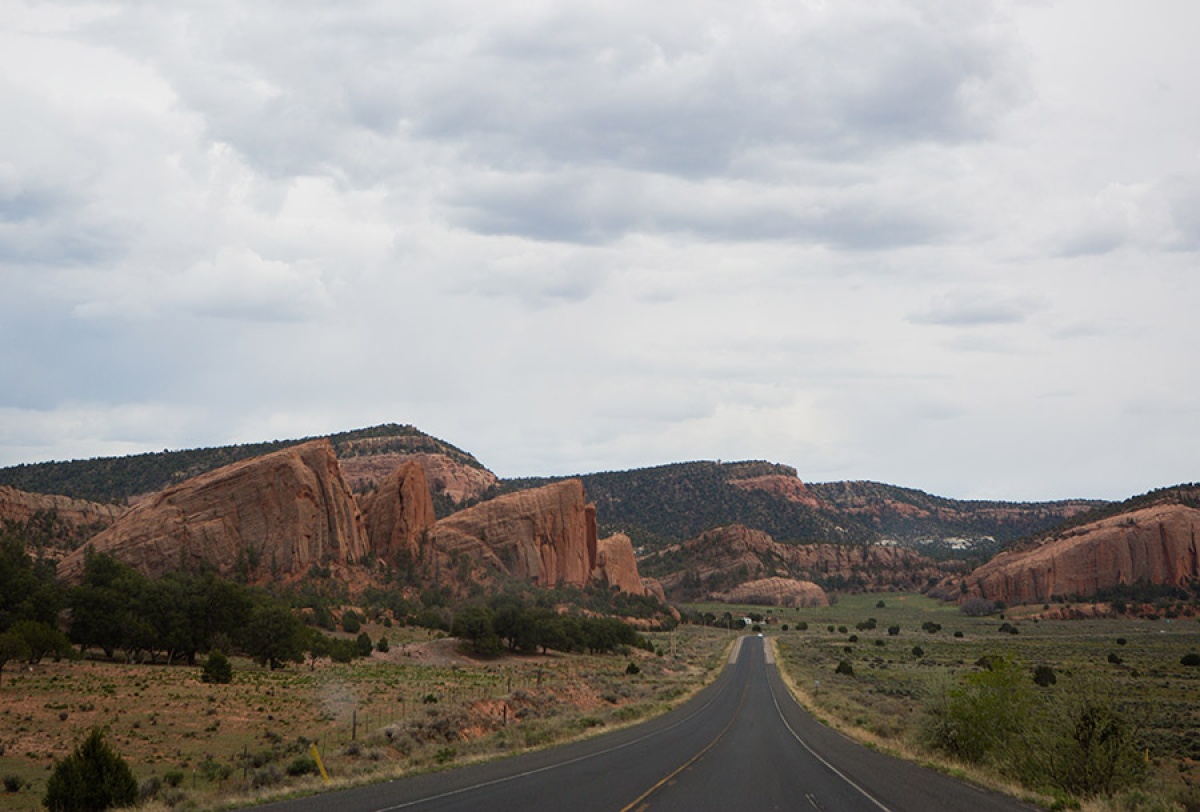Studies Support Navajo Food Movement
Posted on Oct 16, 2015

Imagine a map of the Navajo Nation, at 27,000 square miles the largest Indian reservation in the United States. Lay it on top of a map of New England and it blankets most of Massachusetts, New Hampshire, and Vermont. Now stick pins at the locations of each of the 13 grocery stores in the Navajo Nation. What do you see? If one Navajo grocery store happens to lie in Boston, MA, then the next closest one lies not across town, but in Concord, NH—some 60 miles away. In other words, the land onto which the U.S. federal government forcibly settled Navajo people in 1868 is more than just an ecological desert. It is also so empty of stores selling healthy groceries that the USDA classifies it a “food desert.”
Residents are not taking this lying down. Since the mid-2000s, a growing number have been fighting for the chance to set a wholesome table, passing a much-publicized “junk food tax” that levies an additional 2 percent charge on nutritionally vacant foods and removes taxes from produce, for example. What’s less well known is that initiatives like that are not part of some ragtag movement. They are in fact the result of careful reflection.
Specifically, three recent academic studies, about 100 pages each, have fueled the Cheeto-crushers and salad-champions.
The first was produced by the Navajo Division of Health, the Centers for Disease Control, and partner organizations in 2013. Researchers surveyed grocery and convenience stores throughout the Nation to better understand exactly which healthy foods were available where. Key finding: “Almost all store managers—91 percent—were interested in offering more healthy foods in their stores.”
The second, published by a think tank, Diné Policy Institute, picked up where that left off. Diné Food Sovereignty compiled in-depth interviews with 230 residents to understand their tastes, spending habits, and more. Key finding: “A prevalent number described the desire for access to fresh produce (vegetables and fruits), as well as access to natural and organic foods.”
The latest study, from May, completed the picture. Members of the Navajo Division of Health, Partners In Health sister organization Community Outreach Patient Empowerment, and the Harvard University Law School spent the better part of six months hacking through a bureaucratic jungle, untangling the twisted ways that government regulations and food production standards affect what ends up in Navajo pantries and fruit bowls. Key finding: “Despite these challenges, the Diné people can rebuild a healthy, sustainable food system.”
Indeed. When the “junk food tax” went into effect in April, it was the first of its kind in America, and the envy of politicians like New York’s former mayor, Michael Bloomberg. It’s unknown how it has affected typical Navajo families, whether they still drive 155 miles to stock up on groceries once a month, as they did in 2014. But with plenty of empirical grounding, the food movement is definitely on the move.
{donate_tout}

